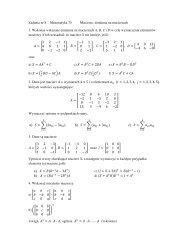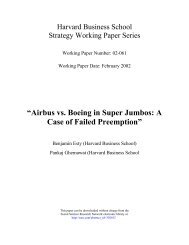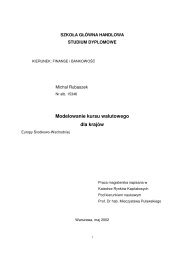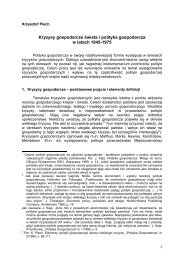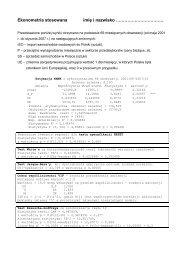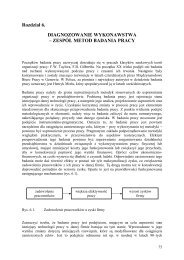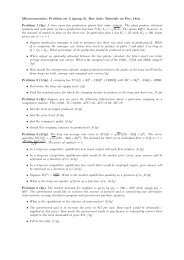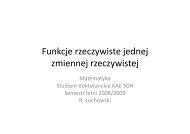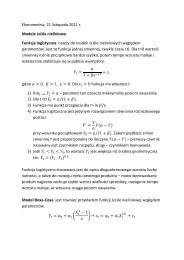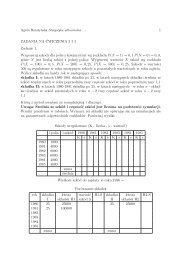Problem sets for Microeconomics II [110051-0471]
Problem sets for Microeconomics II [110051-0471]
Problem sets for Microeconomics II [110051-0471]
You also want an ePaper? Increase the reach of your titles
YUMPU automatically turns print PDFs into web optimized ePapers that Google loves.
6 Oligopolistic competition<br />
Exercise 6.1. The OPEC cartel is trying to determine the total amount of oil to sell<br />
on the world market. It estimates world demand <strong>for</strong> oil to be Q W = 60 − .5P,<br />
Q W denotes the quantity of oil (in millions of barrels per day) and P is price per<br />
barrel. The cartel’s marginal cost is approximately $20 per barrel.<br />
a. Determine OPEC’s profit-maximizing output and price.<br />
b. OPEC’s economists recognize the importance of non-OPEC oil supplies. These<br />
can be described by the estimated supply curve Q S = 1.5P − 20. Write<br />
OPEC’s net demand curve. Find its optimal output and price. What portion<br />
of the world’s total oil supply comes from OPEC<br />
Exercise 6.2. Firm A is the dominant firm in a market where industry demand<br />
is given by Q D = 48 − 4P. There are four “follower” firms, each with long-run<br />
marginal cost given by MC = 6 + Q F . Firm A’s long run marginal cost is 6.<br />
a. Write the expression <strong>for</strong> the total supply curve of the followers (Q S ) as this<br />
depends on price.<br />
b. Find the net demand curve facing firm A. Determine A’s optimal price and<br />
output. How much output do the other firms supply in total<br />
Exercise 6.3. In the small town there are two confectioneries: one of the Mr Long<br />
and one of the Mr Short. Nobody can tell the cakes from those confectioneries<br />
apart. The marginal costs of Mr Long are constant - $1 per cake. Mr Short has<br />
constant marginal costs of $2 per cake. There are no fixed costs. The inverse<br />
demand function is p(q) = 6–.01q , where q is the sum of the cakes sold by both<br />
confectionery owners.<br />
a. Find the reaction functions, quantities and profits in the equilibrium, assuming<br />
that confectionery owners competition is of Cournot type.<br />
b. Find the quantities and profits in the equilibrium, assuming that confectionery<br />
owners competition is of Bertrand type.<br />
c. Assume that Mr Long is a leader of Stackelberg type competition (Probably<br />
due to fact, that he starts working an hour earlier than Mr Short.) Find the<br />
quantities and profits in the equilibrium.<br />
17


![Problem sets for Microeconomics II [110051-0471]](https://img.yumpu.com/32645692/17/500x640/problem-sets-for-microeconomics-ii-110051-0471.jpg)

